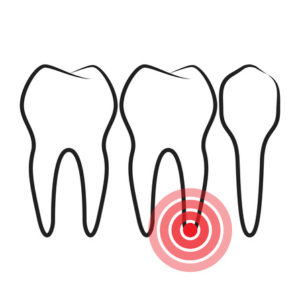 A root canal is a procedure performed to treat decay or infection inside a tooth. The soft tissue inside a tooth is called the pulp. The pulp contains nerves which send signals of discomfort when there is an issue or infection. During a root canal, the damaged pulp is removed along with the nerve of the tooth. This prevents the spread of infection and alleviates discomfort.
A root canal is a procedure performed to treat decay or infection inside a tooth. The soft tissue inside a tooth is called the pulp. The pulp contains nerves which send signals of discomfort when there is an issue or infection. During a root canal, the damaged pulp is removed along with the nerve of the tooth. This prevents the spread of infection and alleviates discomfort.
Root Canal Procedure
Modern dental techniques make getting a root canal a simple and comfortable procedure. First, a local anesthetic is administered to prevent minor discomfort. The dentist then uses tiny instruments to access the root canal through the crown of the tooth and remove the pulp. Once the pulp and the nerve have been removed from the chamber, the area is gently but thoroughly cleansed. The tooth is then filled with a bio-compatible material and sealed to prevent further infection.
Just After a Root Canal
In most instances, a temporary crown is placed over the tooth while a permanent crown is fabricated in a laboratory. Although you should feel no discomfort, the area may be sensitive after the procedure. This is temporary and will dissipate in a couple of days. Your dentist will want to closely monitor your progress to ensure there is no further infection. You will also need to return to have the permanent crown placed. The permanent crown will protect the integrity of the tooth and restore it to full function.
Root Canal Purpose
The purpose of a root canal procedure is to save a natural tooth. Removing a damaged tooth may seem like a simple option but it can cause further dental issues in the future. Removing a tooth and not replacing it can cause the neighboring teeth to shift or rotate. This can cause problems with speech, make it difficult to chew and make it harder to keep teeth clean which can lead to gum disease.
If you have been told you need a root canal, or think you might, schedule an appointment at Tate Family Dentistry today. Saving a natural tooth is always the best option and our primary goal.
